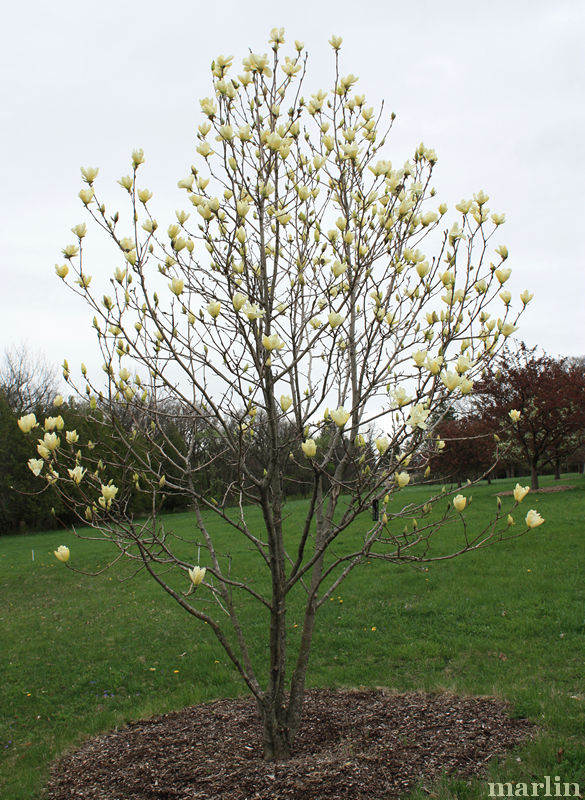Elizabeth Magnolia – Magnolia ‘Elizabeth’
A smaller magnolia with lovely primrose-yellow flowers makes for an outstanding ornamental
A hybrid cross between M. acuminata and M. denudata, Elizabeth magnolia is a deciduous variety with elegant tapered buds opening to outstanding pale, luminous primrose-yellow blooms on bare branches. Best planted in front of contrasting evergreens.
Developed at The Brooklyn Botanic Garden, this plant is patented and may not be reproduced by budding or grafting. It makes an outstanding specimen tree in a sunny spot where it can develop a symmetrical crown. Grows to 20 feet and 15 wide. Magnolia buds and flowers are susceptible to late spring frost [6].
Saucer Magnolia grows best in slightly acidic, moist but well-drained soil. Regular watering may be required during hot weather. [6] USDA hardiness zones: 5A through 9A.
 Elizabeth Magnolia, Morton Arboretum acc. 215-2000*2, is 9 years old
Elizabeth Magnolia, Morton Arboretum acc. 215-2000*2, is 9 years old
The earliest flowering plants date back about 130 million years. According to Cronquist Evolution and Classification of Flowering Plants, the most primitive of all living angiosperms belong to the subclass Magnoliidae. This subclass contains several primitive plant families, including the water-lily family (Nymphaeaceae), buttercup family (Ranunculaceae) and Magnoliaceae.

The earliest flowering plants date back about 130 million years. According to Cronquist Evolution and Classification of Flowering Plants, the most primitive of all living angiosperms belong to the subclass Magnoliidae. This subclass contains several primitive plant families, including the water-lilies (Nymphaeaceae), and buttercups (Ranunculaceae). Tree Encyclopedia | Tree Index | Magnolia Main

